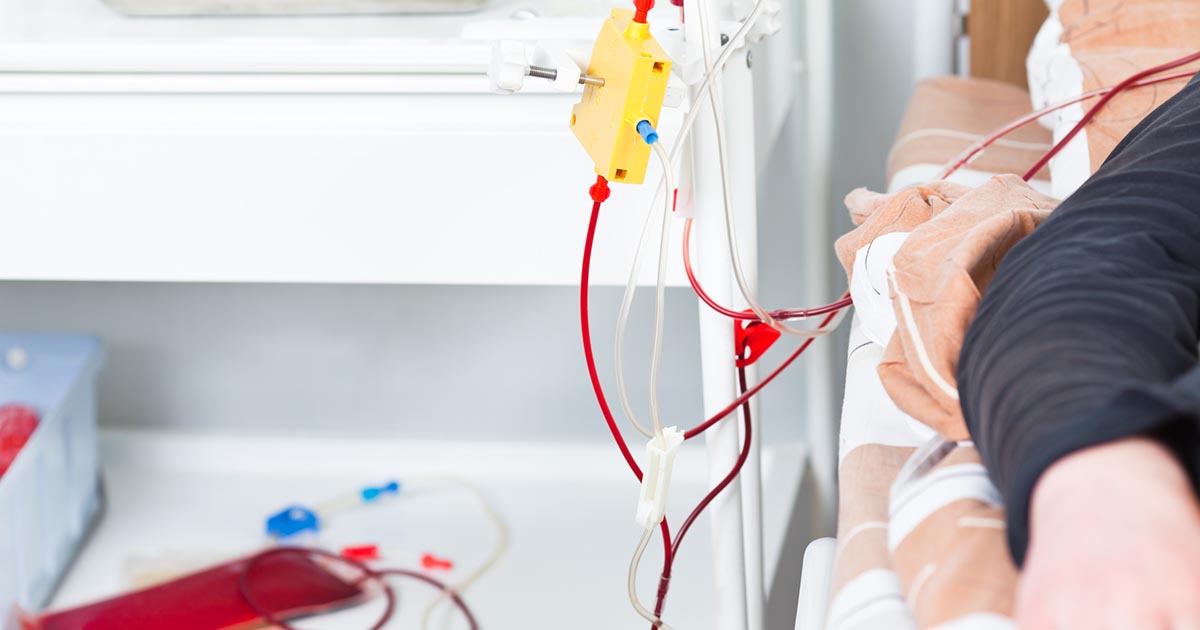Treatments For Acquired Hemolytic Anemia
Acquired hemolytic anemia is a rare form in anemia bracket of diseases. In individuals with anemia, the bone marrow either fails to create a sufficient amount of red blood cells or creates cells that don't function as well as they should. Red blood cells are crucial for carrying oxygen throughout the body, and when we are lacking them, our oxygen-deprived bodies leave us feeling short of breath or tired. Red blood cells typically live for around four months before new ones replace them. In patients with acquired hemolytic anemia, the body destroys these cells before new ones are created to replace them. Sometimes, these blood cells only live for a few days. The 'acquired' element refers to the individual not being born with this specific type of anemia. Get to know the various treatment options for acquired hemolytic anemia now.
Plasmapheresis

Plasmapheresis refers to a broad range of treatment procedures in which plasma is filtered from the blood. This is typically accomplished through a centrifugation process, which calls upon the different gravities present in the various blood products, manipulating it to extract the desired element (in this case plasma) and separate it from the other elements, such as white blood cells and platelets. The procedure is also referred to as plasma replacement therapy. It requires a healthy donor to have their blood removed, with the healthy plasma being drawn out through centrifugation before the blood is filtered back into the body. The plasma is then used to treat individuals with various disorders, including hemolytic anemia.
Blood Transfusions

Patients with acquired hemolytic anemia often require blood transfusions, especially if their condition is quite severe. It is sometimes impossible, though, to find compatible blood, as the autoantibody in the patient's blood serum can react poorly with normal red blood cells from a donor. Special compatibility tests need to be conducted before authorizing a blood transfusion for patients with this condition to ascertain what the optimal unit of red blood cells would be. When a transfusion is approved, a donor will give healthy blood through an intravenous line (IV). The blood is then preserved, matched with an appropriate recipient, and transfused through an IV into the patient's blood vessels. The receiving treatment can take anywhere from one to four hours, depending on the severity of the condition and how much blood the patient needs.
Medication

Physicians may also recommend medication for patients diagnosed with acquired hemolytic anemia. One category of medications often used are corticosteroids, which are typically the first line of attack utilized when beginning to treat acquired hemolytic anemia. These are powerful steroids that stop the immune system from creating the antibodies destroying red blood cells. However, steroid use is never recommended as a long-term solution to any health problem due to the seriousness of the potential side effects. These corticosteroids are typically utilized in conjunction with another treatment option to minimize the risk of causing further complications.
Blood And Marrow Stem Cell Transplant

Because of where underlying problems of decreased red blood cells and their effectiveness originates, researchers have begun to utilize blood and marrow stem cell transplants to treat acquired hemolytic anemia. Though in the past the cells were taken directly from the bone marrow, researchers have improved the technology behind this formerly painful procedure, now collecting the stem cells from the blood itself. Because the cells of the patients are already flawed, they will receive the stem cells from a donor before undergoing this treatment. Receiving blood and marrow stem cell transplants has been shown to reduce the number of blood transfusions needed in individuals with acquired hemolytic anemia.
Splenectomy

A splenectomy is a surgical procedure in which the spleen is removed. The spleen is the organ where the red blood cells are destroyed. In normal bodies, they will be replaced by fresh ones, but this does not occur in patients with hemolytic anemia. By removing the spleen, doctors can reduce the speed at which the red blood cells are destroyed. Typically, this option is reserved for severe cases of immune hemolysis and in patients who did not respond to treatment with corticosteroids or immunosuppressants. In progressive cases, though, it may be called upon as the first treatment approach.
